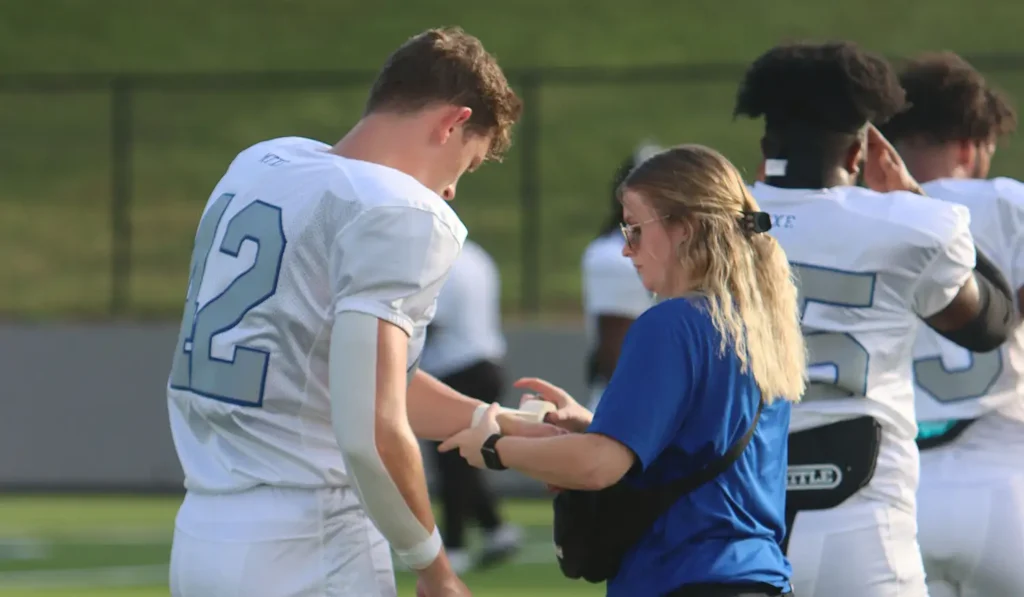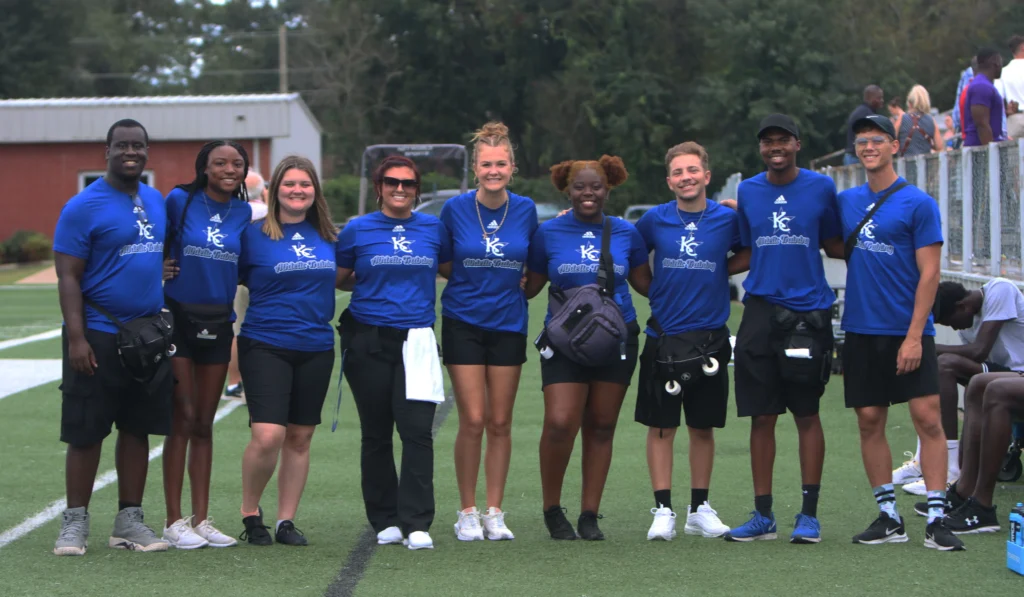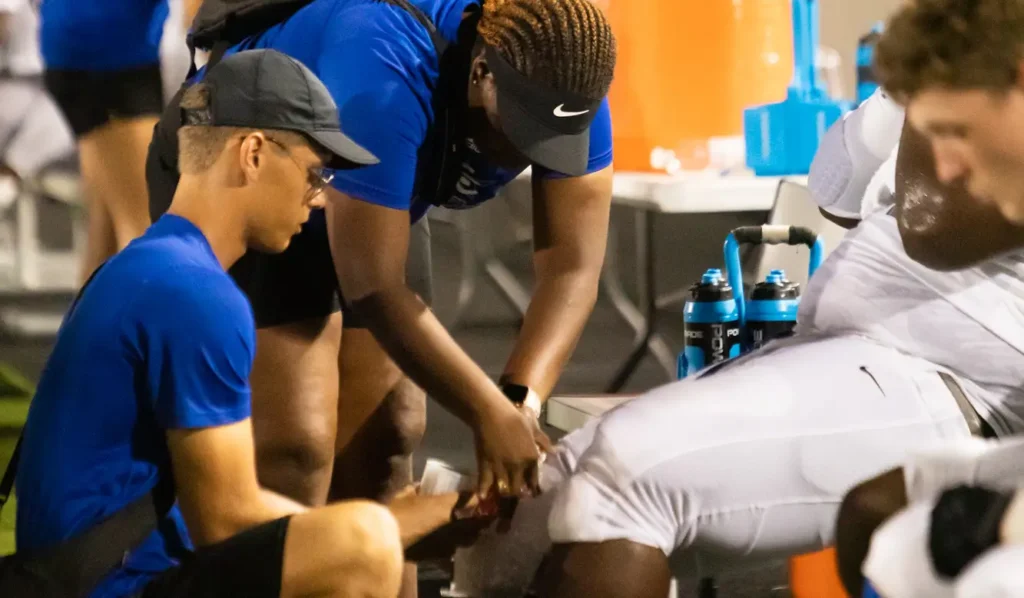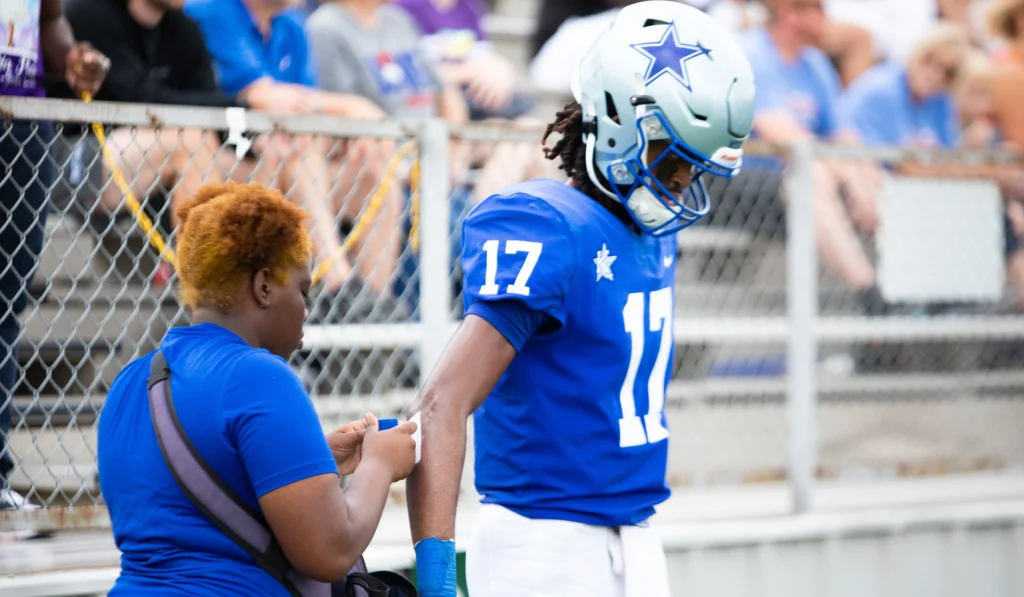



Athletic trainers (ATs) are unique health care providers and an essential member of any health care team skilled and trained in the prevention of injury and illness, examination, diagnosis, treatment and rehabilitation of emergency, acute or chronic injuries and medical conditions. ATs work with a diverse patient population and are trained and educated on a variety of health care topics including orthopedic injuries, concussions, heat illness, sudden cardiac arrest and more.
On average, schooling to become an athletic trainer takes 5 to 6 years, or longer for terminal and clinical doctoral degrees. The current minimum entry point into the profession of athletic training is at the master’s level. Students will receive a Master of Science in Athletic Training (MSAT) and upon completion of a CAATE-accredited athletic training education program, students become eligible for national certification by successfully completing the Board of Certification, Inc. (BOC) examination.
ATs work with a variety of active populations, ensuring their health and well-being in work, life and sport. The AT’s diverse skill set and full continuum of care makes them an ideal health care provider for many different settings. ATs can be found in youth sports, middle schools, high schools, colleges, universities, professional sports, the armed forces, public safety, performing arts, private practice, clinics and hospitals.
The KC Athletic Training Program strives to provide an educational atmosphere to students in the AT program, giving them the tools needed to transition easily into a four-year Athletic Training Education Program, then into an Entry-Level Master’s Program. Students will learn in a variety of environments in the Athletic Training Facility and on the fields and courts. Students in the KCAT program will be exposed to a variety of sports and various healthcare environments in which to observe and learn different technical skills involved with the progression of Athletic Training. Students will learn through hands on experience under the supervision of Certified Athletic Trainers.
Students completing the two-year curriculum will receive an Associate of Arts or Science degree with emphasis in athletic training.